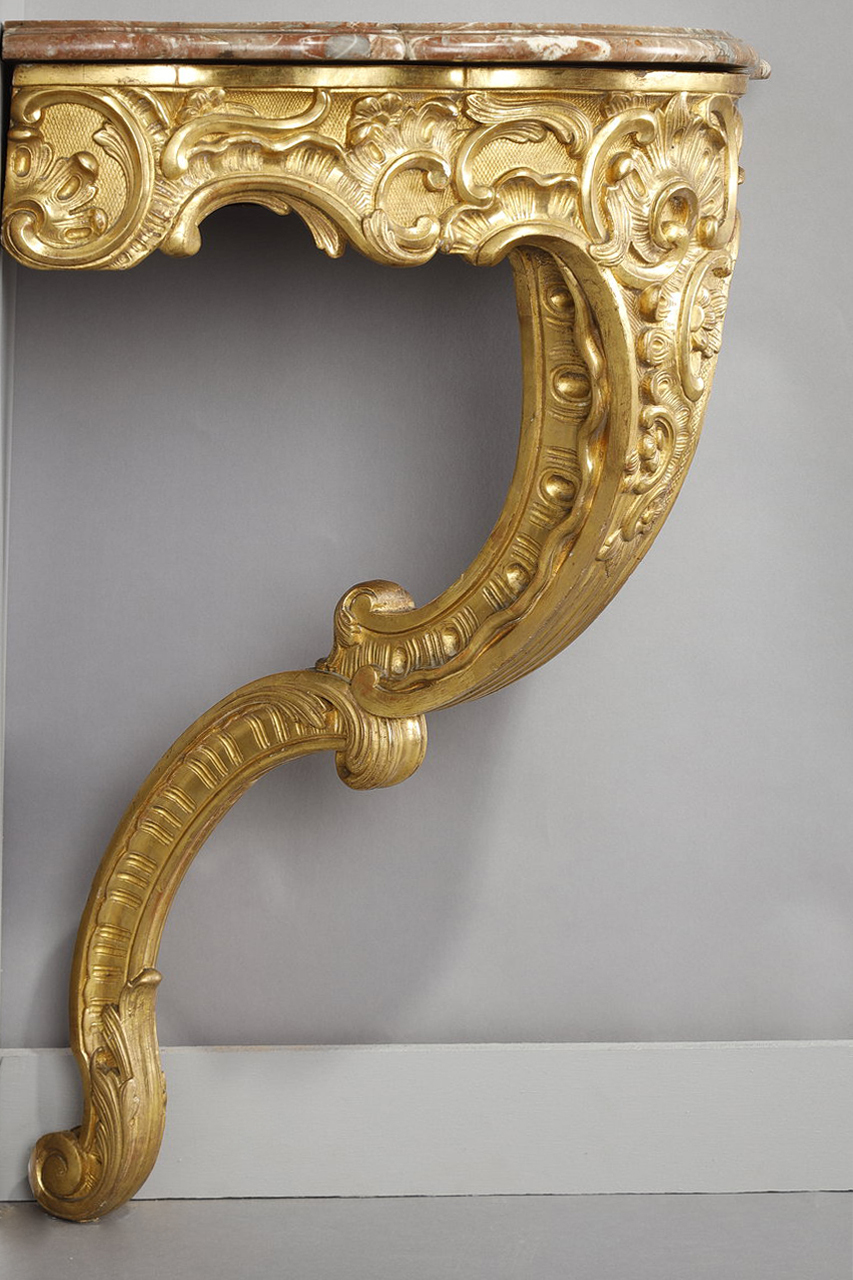Rocaille, the history of an ornament
25.01.21
Rocaille ornamentation, often evoked in opposition to the antique, appeared in Baroque Europe and developed to the point of transforming the very structure of furniture and objects. The pieces in the Galerie Atena, created between 1720 and 1890, underline the extraordinary vigor of this ornamental grammar and its power of renewal over more than a century. The spontaneity of an inspiration freed from symmetry and formal rules is visible in sculpted furniture, while the extreme sophistication of the compositions is revealed in small pedestal tables, clocks, lighting and small collectibles.
Louis XV style chest of drawers, decorated with Rocaille gilded bronzes
What does the term 'rocaille' mean?
Rocaille was an ornamental style in vogue in the 1730s, characterized by the representation of natural elements (shells, rocks, caves, foliage) in contoured forms.
Rocaille is the title given to a print produced in 1737 by French architect and engraver Claude Augustin Duflos le Jeune (1703-1770), after François Boucher. Of a series of four prints, this is the only one to feature no human representation. Instead, the composition features an assemblage of shells and plant ornaments, with a garden in the background. The whole is asymmetrical, jagged and whimsical. Each element is inspired by nature, but transformed by the artist's imagination.
The rocaille imitates the tormented relief of natural rocks, usually embellished with shells, and was used for the composition of false caves and fountains in parks and gardens. This tradition of rock caves and shells means that the two terms are often associated. The interest in shells in France in the 18th century was also due to the development of collections of natural history objects and cabinets of curiosities, filled with rare and singular things: fosils, lightning stones, stuffed animals, shells, herbariums, among many others... Artists, in turn, were inspired by the most picturesque shells and those with the most irregular contours, such as the Murex - used to extract purple, or the Chicoreus, which were particularly sought after.
What is the rocaille style?
The rocaille style refers to the first period of the Louis XV style (1723-1750), marked by opulent naturalistic decoration, which reached its apogee around 1730. It was inspired by artificial grottoes and rock elements reconstituted in asymmetrical compositions. This decoration, which marked the beginning of the Baroque period, was complemented by shells, geological elements, foliage falls, jagged palmettes and floral motifs in carved wood, bronze and, later, porcelain imported from Meissen, all in compositions of asymmetrical curves and counter-curves.
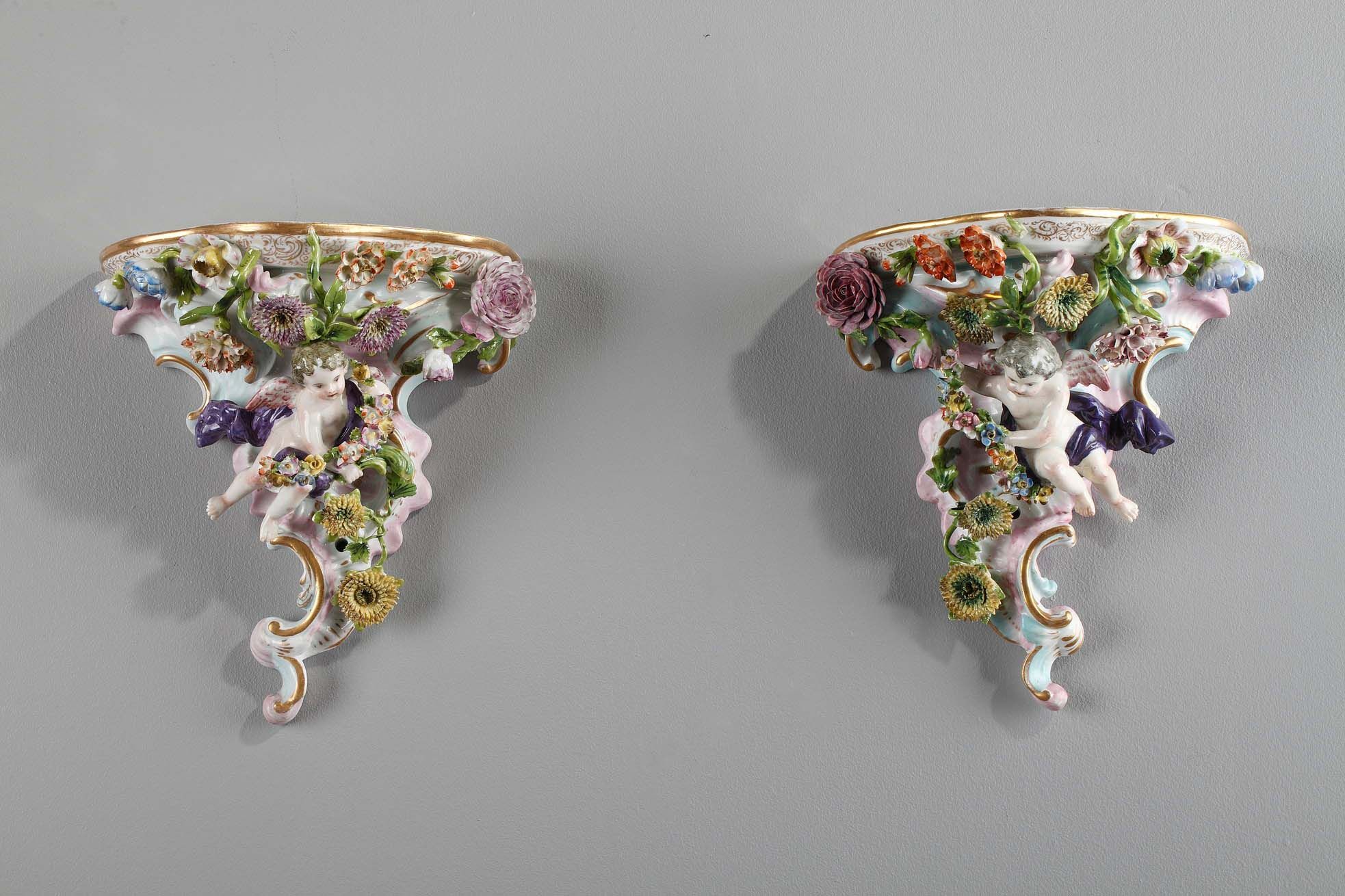
Rocaille porcelain consoles in the Meissen style
Under Louis XV, Rocaille invaded furniture and objets d'art. This ornamentally overloaded style, which spread throughout Central and Western Europe by mid-century, was nicknamed "Rococo" by the Italians. In France, the artists who practiced it - the ornamentalists Juste Aurèle Meissonnier (1695-1750 ) and Jean Bérain (1640-1711), the sculptor-chiselers Jacques Caffieri (1673-1755) and Jean-Claude Duplessis (c. 1690-1774) - created original designs, full of fantasy and picturesqueness, that ran counter to classicism.
Influenced by French Rococo, the Rocaille style spread to other European countries in the second half of the century. In England, it influenced the Chippendale style (1754-1770). In Germany, it was introduced by the architect François de Cuvilliés (1695-1768), a designer from Hainaut in the service of the Elector of Bavaria, whose ornamental style, rich in plant motifs, spread throughout Europe thanks to a series of engravings published in 1738. In Italy, the Serenissima adopted it theatrically. In Spain, Austria and Bavaria, it took the form of a late Baroque, with exaggerated asymmetry, borrowing elements from the French Rococo.
Unlike in other European countries, such as England, the rocaille style had a lasting influence in France, where it lasted until 1770, when neoclassicism and Greek taste became dominant. Rocaille style and ornamental practice were then criticized, in the face of the brand-new idea of a "regeneration of the arts" on the model of Rome, Herculaneum or Athens.
After the neoclassical episode, which straightened out the curves, the rocaille style was revived by the historicist movement, which found its sources and inspiration in past eras. The styles of the Ancien Régime were widely imitated under the Second Empire, and the Louis XV style in particular. From the middle of the 19th century onwards, many pieces of furniture and objets d'art in the Louis XV style, or inspired by the rocaille aesthetic, can be found.
Rocaille in furniture and objets d'art decoration
Popular from the 1720s onwards, the rocaille aesthetic spread to all fields, but found its most striking expansion ingoldsmithing, tableware, ceramics and interior design. The Baroque productions of the Meissen Manufactory are a perfect example for ceramics. For silverware, rocaille ornamentation abounds on shell-shaped boxes, candlesticks and sconces, andirons, chandeliers... These small, precious objects, along with drawings and prints, contributed to the spread and success of the style.
In furniture, the rocaille repertoire is meant to create astonishment. Asymmetrical, sinuous and curved, it is composed of shells and other jagged natural forms, squared-off backgrounds with florets, winged cartouches, shell palmettes, openwork shells, mascarons, scrolled feet and pierced decorations. Chests of drawers, consoles and desks are decorated with rocaille cartouches, bronze falls and gadrooned leaves, which show to a great fantasy and freedom of treatment. This decoration was widely imitated in the 19th century to create Louis XV or Louis XVI style living room.
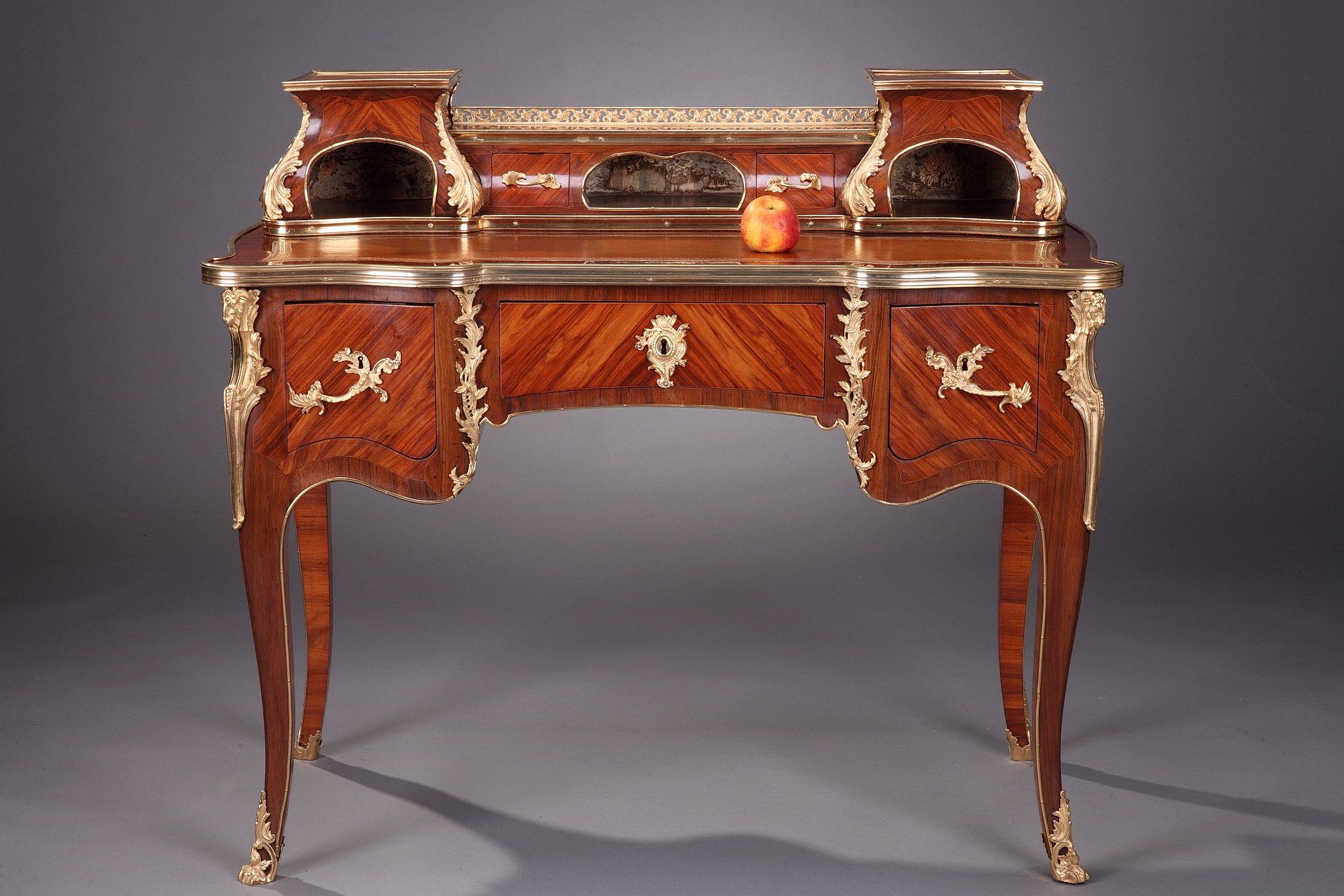 Louis XV style lady's writing desk in marquetry decorated with irregular foliage
Louis XV style lady's writing desk in marquetry decorated with irregular foliage


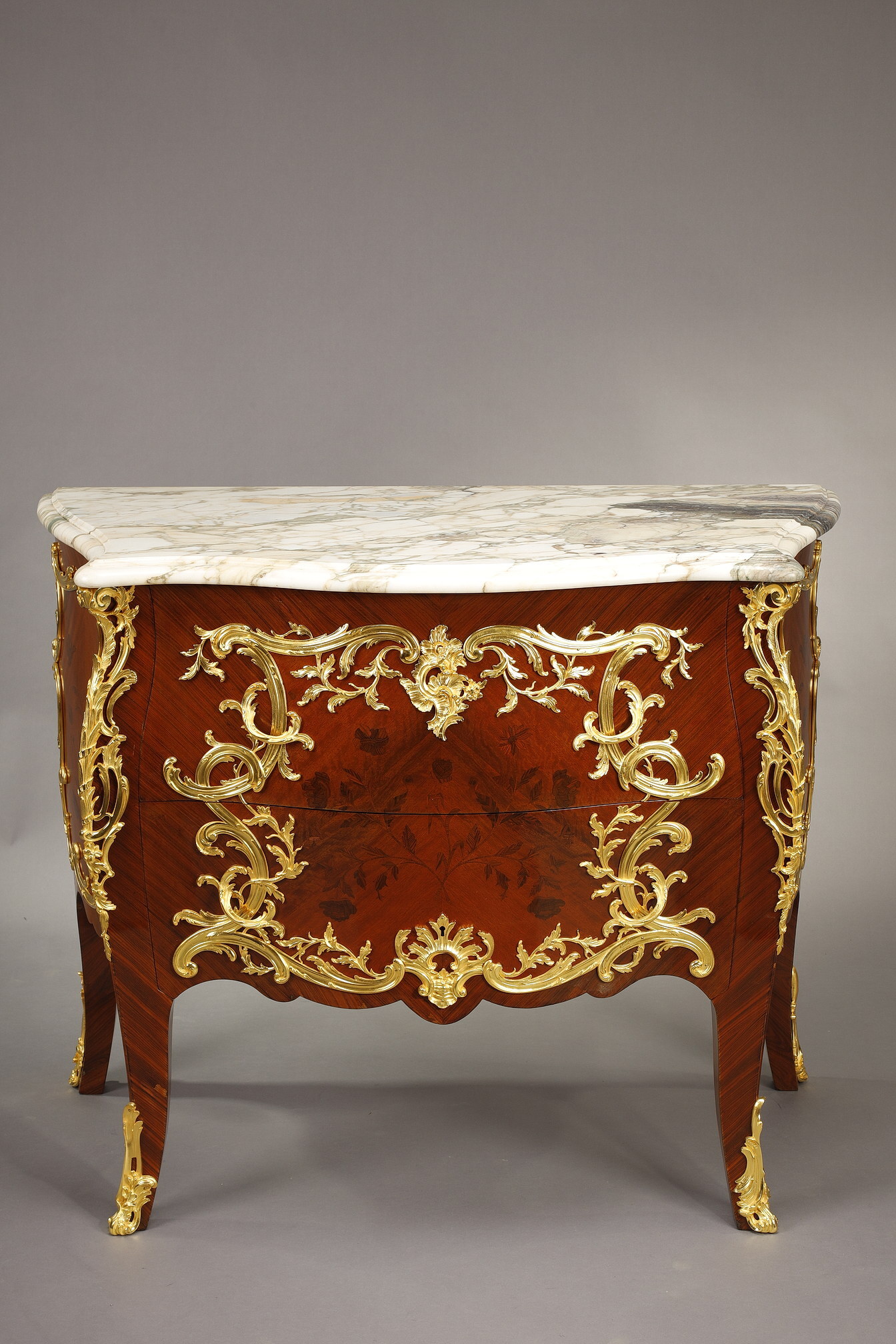
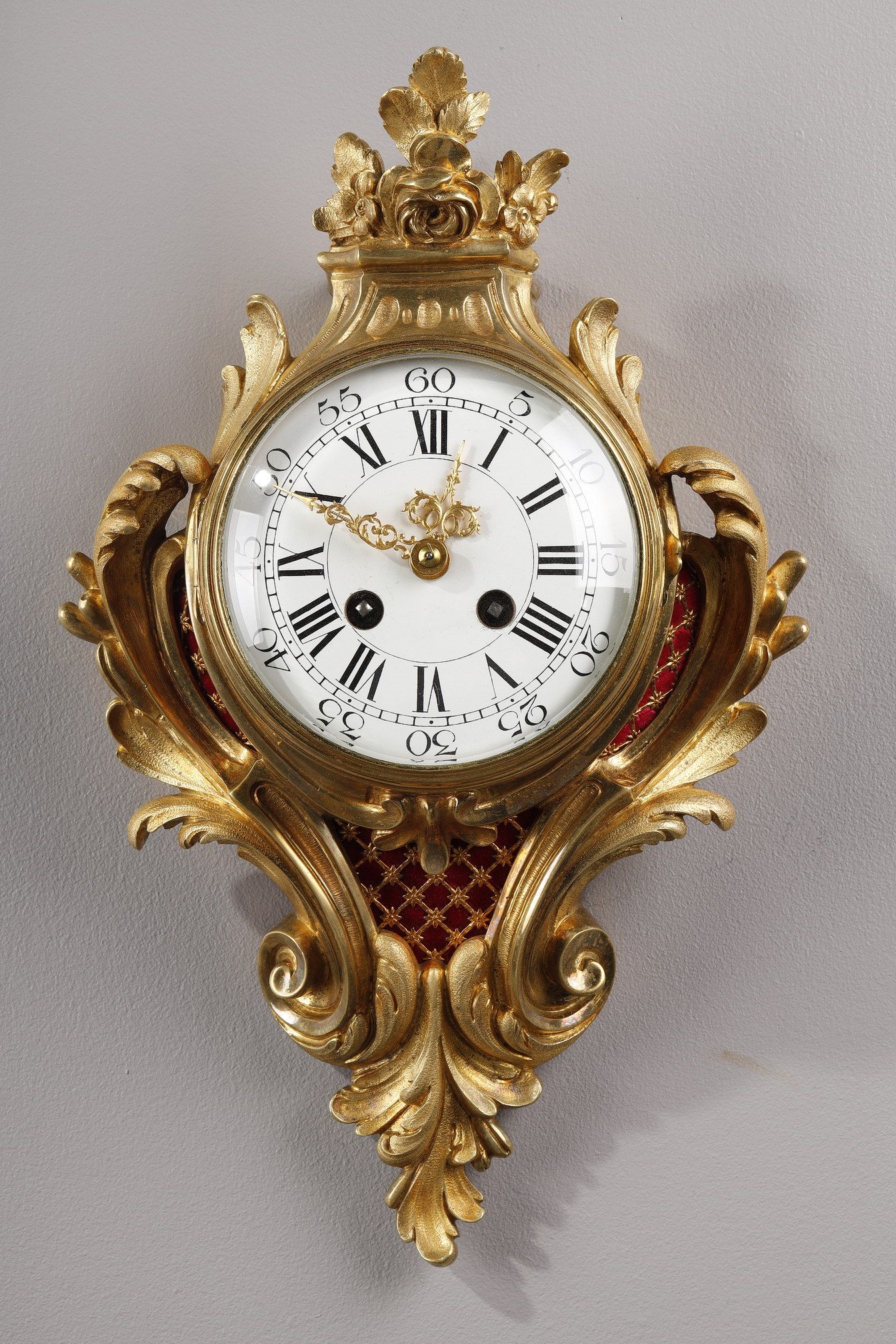 Small Louis XV-style cartel with rocaille decoration
Small Louis XV-style cartel with rocaille decoration
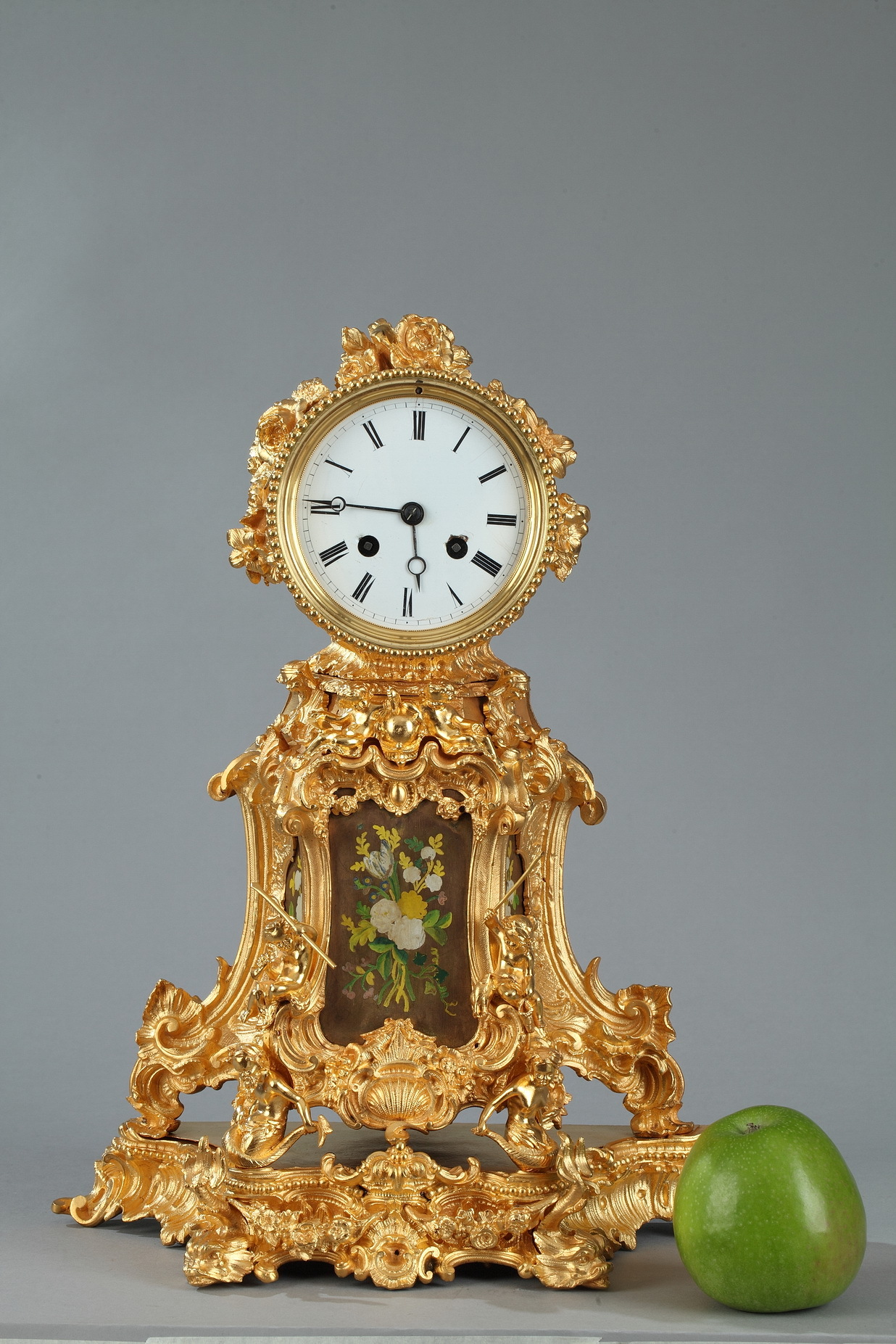
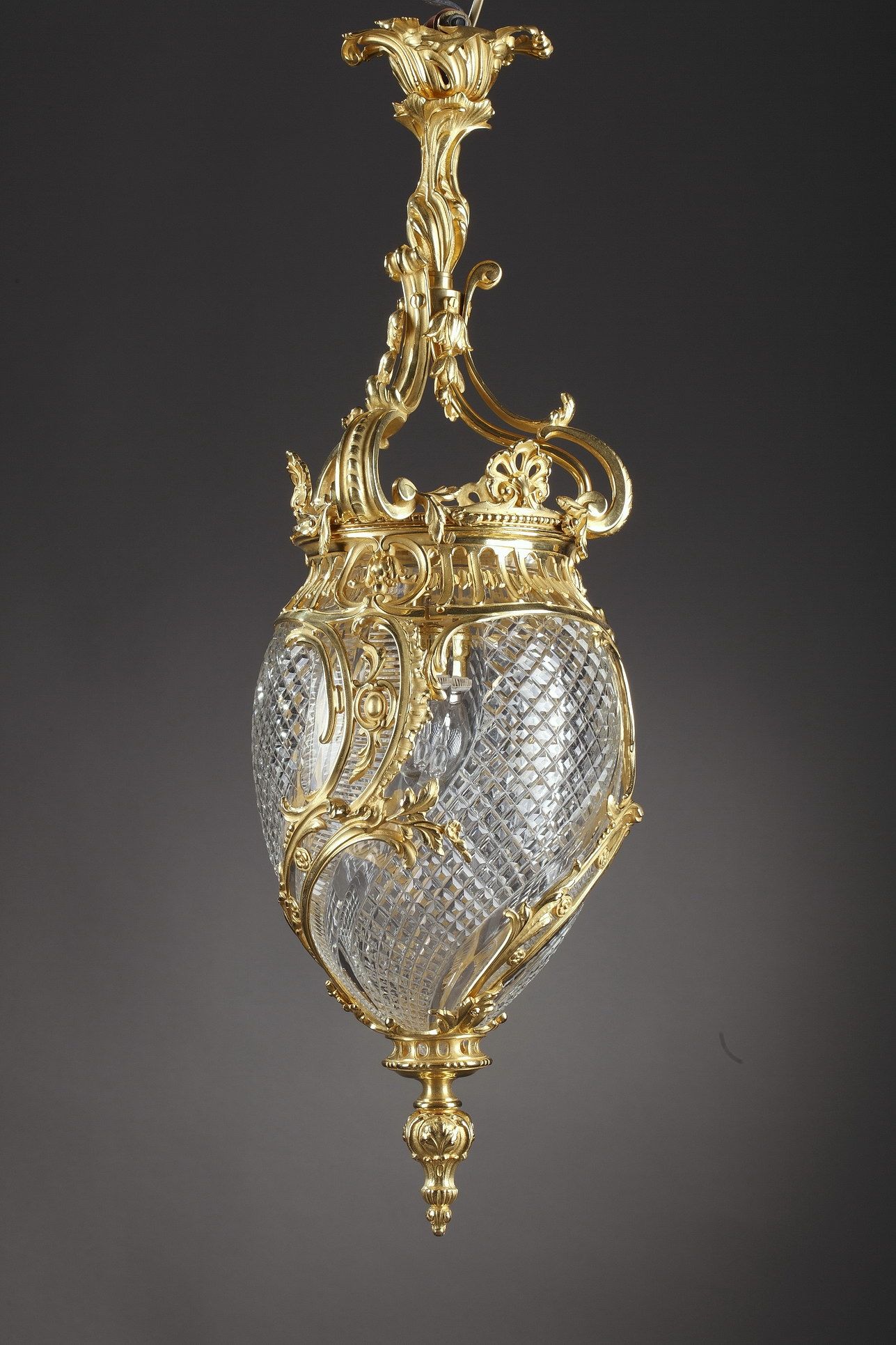 Louis XV-style ovoid lantern
Louis XV-style ovoid lantern